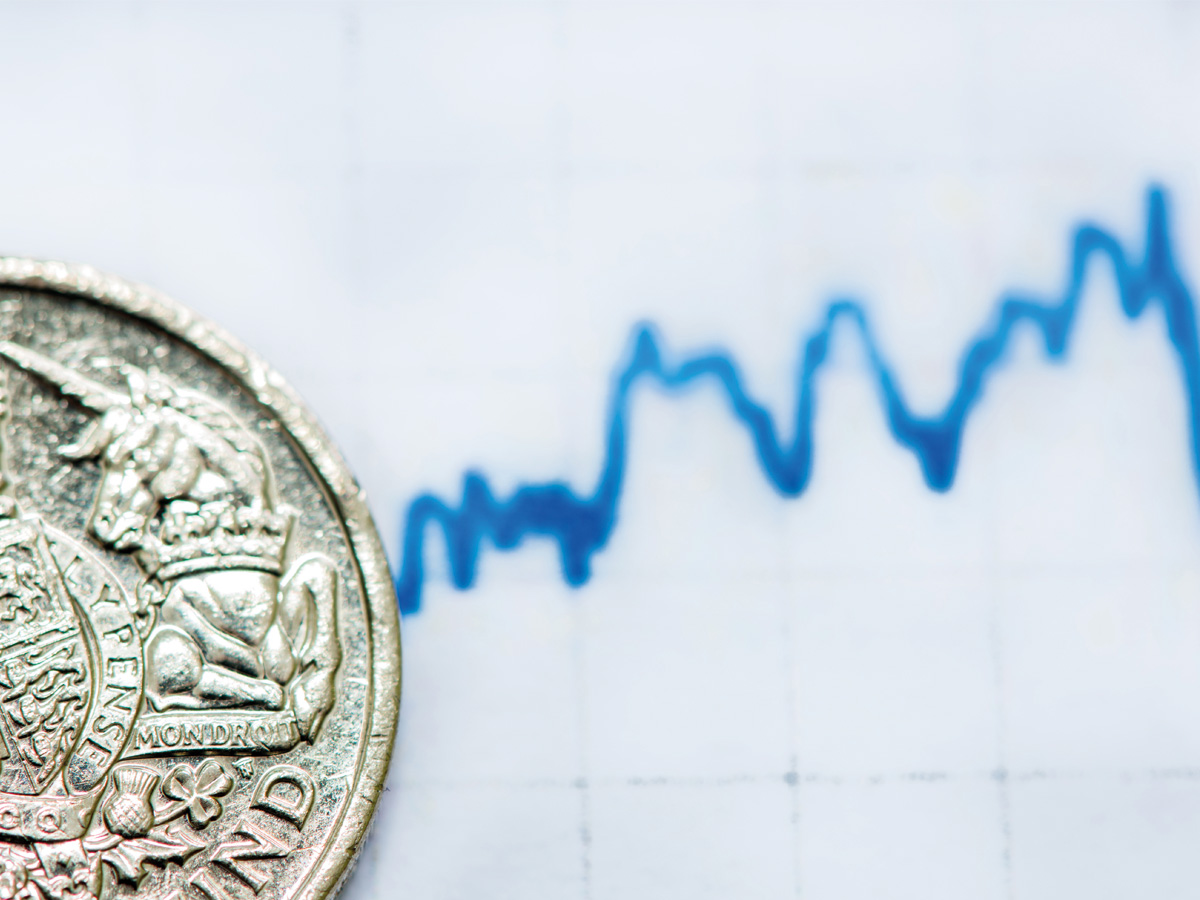It may now seem like a bad dream. Yet among all the noise of the market chaos that has followed September’s mini budget, commentators caught up in the myth of pension schemes going bust and sterling bombing, missed one thing: the crisis was fundamentally, and importantly, a bond story.
During the heady days that followed Kwasi Kwarteng announcing his economic plan, gilts went off the scale into truly disastrous territory. The price of government debt slumped, causing yields to climb to their highest since the financial crash in 2008, as investors demanded higher returns.
Indeed, yields on 30-year UK sovereign bonds hit 5.17% on 28 September in the aftermath of Kwarteng’s announcements. The day he was sacked saw them move to 4.22%. However, that’s still some way above the level they were at the day before the mini budget, which took place on 23 September, when they stood at 3.59%. They then settled at 3.64% with the arrival of Rishi Sunak into Number 10.
After the much discussed Bank of England intervention into the bond market, ostensibly to protect over leveraged pensions from rising gilt yields (see pages 18-23), after what was a dismally assembled fiscal policy in the mini budget, it was evidently too much of a toxic brew for sovereign bonds.
Yet Alexis Stenfors, an economist, offers a different view. “The episode involving Liz Truss and the mini-budget, and then the one featuring the Bank of England gilt intervention, showed that the long-end yield had become extremely sensitive following years of quantitative easing. And not only in the UK,” he says.
The only member of government making this valid point was Jacob Rees-Mogg, who many saw as trying to pass the buck with such analysis, and, therefore, this went by relatively unnoticed by the press.
Shaken and stirred
But while the markets may have shaken and stirred gilts, the situation could be said to have resulted in one in which bonds are on their way back.
This may seem a surprising claim. Especially when looked at from another direction, which does not reflect well specifically on corporate bonds: in which highly rated paper issued in sterling have posted a negative total return of around 25% this year, as measured by the ICE BofA Sterling Corporate index – making it by far the largest loss in the index’s almost 26-year history.
In comparison, a similar index tracking US-dollar bonds is down 18%, while one following euro-denominated bonds has lost 15% on a total-return basis, which includes price changes and interest payments.
From these numbers it could be argued that – like the song used when New Labour swept to power in the 1990s – things can only get better.
But instead, Dan Mikulskis, a partner at consultancy Lane Clark & Peacock, offers a case for the march of bonds. “In a year where bonds have registered their worst year in the last half century, and perhaps ever, it might be strange to say that ‘bonds are back’, but it’s true,” he says. “The flip side of declining bond prices is, of course, increasing yields, which means higher future returns.”
Tina to Tara
That is a good starting point.
Looking back further, beyond the recent market crisis, it had become common to cite TINA – There Is No Alternative [to stocks] in portfolio construction. But that has quickly changed to TARA – There Are Reasonable Alternatives.
And those alternatives include government bonds offering yields of 4%, high-quality corporate bonds offering returns of 6% per annum, and lower-quality bonds offering up to 9%. “Until recently such future return prospects probably weren’t available, even in the riskier parts of the stock markets,” Mikulskis says.
This is vitally important. It means bonds can again justify their place in a portfolio on, it should be noted, return grounds, not just as a hedge against falling stock markets. “It’s also good news for lower risk investors who can now command much better returns at low levels of risk than a year or so ago,” Mikulskis adds.
As possibly another interpretation of this, the relative valuation of equities versus bonds has moved in favour of bonds. Equity valuations look to have largely normalised, says Barclays, with the MSCI Europe trading at 11x forward price/earnings, which is 23% lower than the long-term median. “Given the valuation adjustment, positioning and cycle risks, we think bonds o er a more credible alternative to equities now,” Barclays said in a statement.

In a year where bonds have registered their worst year in the last half century, and perhaps ever, it might be strange to say that ‘bonds are back’, but it’s true.
Dan Mikulskis, Lane Clark & Peacock Partnership Investments
Yield watch
Even when you consider the market crisis itself, it has had an impact on bonds – for the better, from an investor perspective. Matthew Russell, a fixed income fund manager at M&G, says because the moves in yield have been so pronounced, those bonds now have less sensitivity to further increases in yields. “If yields go higher, yes you will still get hurt, but not by as much as you would have previously,” he says. “If yields fall, you will end up gaining more in capital value than you previously would have too.”
This dynamic is, unsurprisingly, also at play in the longer-dated world of gilts. “Last December, 40-year UK government debt was trading just below a 96 cash price. Now you can pick those bonds up in the 20s. Not a bad relative value trade for the long-term investor,” Russell says.
And given the government’s shift in direction following the mini budget, with Jeremy Hunt replacing Kwarteng as chancellor and rejecting ‘almost all’ of his economic policies, the evidence is that long-term UK bonds are to outperform their US and German versions, according to UBS. “This structural narrative of tighter monetary and fiscal policy should be a much stronger driver of long-end gilts,” UBS wrote in an outlook.
It could be said, as one or two economic historians have noted, this is in-line with the power the bond market has – a power that is evident over centuries: and one that Truss and Kwarteng would have been wise to have recognised.
For example, it was bonds that helped secure the Duke of Wellington’s victory at Waterloo by raising the funds to hire mercenaries to join the fight. Wars have been fought as a result of finance raised through bonds: particularly the two world wars.
More recently, when Covid shut the world down, governments raised hundreds of billions of pounds and dollars through bonds to maintain stability in the financial system. Which it broadly succeeded in doing.
Major challenges
Of course, for some pension schemes it has been a challenging time on the bond front. Mark Fawcett, Nest’s chief investment officer, puts some perspective to this theme. “This year has seen investors dealing with rising interest rates and increasing inflation. We are seeing sharp declines in corporate bond prices – and rises in yields – due to an increase in government bond yields and credit spreads. All of this poses major challenges for economies, and investors have become more concerned that a recession is looming.”
But he too diverts back to the attraction of bonds. “We believe at times like these it’s even more important to take a long-term view and look for asset classes that offer future gains,” he says. “For example, investment-grade sterling corporate bonds have become more attractive, with yields well above 6%.”
And Fawcett notes that when inflation falls, these bonds are likely to be perceived as a good buying level, not least because even if the UK economy goes into recession, defaults by investment-grade issuers are rare.
“International companies also choose to issue sterling-denominated debt so you are not necessarily buying UK economic risk when you buy a GBP-denominated corporate bond and additionally you are adding geographical diversification to your portfolio,” he says.
Going global
This being the case, there are other issues to consider, as bond investors face many important portfolio construction choices: government bonds are often the starting place, but even then, one faces the question of how much duration to hold, and whether to invest in conventional or index-linked bonds.
“Investors are increasingly looking globally when it comes to their high-quality corporate bond portfolios, mixing exposure to the US, Europe as well as the UK, and moving away from traditional ‘all stocks’ portfolios to think more carefully about duration, often opting for shorter-dated bonds with less interest rate risk,” Mikulskis says.
“On that same theme, floating-rate paper has also been popular in a rising interest-rate environment with things like asset-backed securities offering good returns often at a slight premium to corporate bonds of comparable quality,” he adds.
It is also worth remembering that bond indices are not constructed in the same way as equity indices, as the weighting of capital to individual issuers is affected by the amount of debt being issued, not just market prices.
This makes those indices less useful as capital allocation guides, compared to stock market indices which embed the market’s aggregate views and, therefore, carries a lot of information. “This has significant consequences, it means that investors might want to take more direct control over some of their capital allocation decisions when investing in bonds, rather than using indices to guide their choices as is more common in stock markets,” Mikulskis says.
The fixed income investment team of Mark Nash, Huw Davies and James Novotny at Jupiter Asset Management offer a guideline about the nature of attractive government bonds across different nations. “A dividing line between sovereign bond markets with natural resources and those without is being drawn, blurring the previous ‘developed’ and ‘emerging’ market classifications,” they note, observing the impact of the energy crisis on the bond picture.
These criteria present a potentially interesting list of countries which could be favourable to buy sovereign bonds: the US, Russia, Saudi Arabia and China, being top of the list. Investors could potentially be interested in the Russian 10-year sovereign bond, which yields 9.7%, except sanctions restrict them.
High quality
Despite, or even because of the market crisis, bonds will continue to play a role in a long-term portfolio, particularly for pension funds. “At Nest we believe having high-quality active management of credit portfolios is important, even when markets are not fluctuating,” Fawcett says.
And with the Bank of England confirming it is to push ahead with its quantitative tightening from 1 November, bonds can definitely be said to be back again. Bond sales this year, the Bank of England noted, will be in short and medium maturity, that is, bonds up to 20 years. It could also help deal with the scourge of rising inflation, which hit 10.1% for September.
Reflecting on the recent crisis, for Jeremy Lawson, chief economist and head of research at abrdn, the market chaos was, in fact, no bad thing. “The episode demonstrates there are still some self-corrective political and market mechanisms in place when truly bad fiscal decisions are made,” he says.
On this reading, which we can describe as a mainstream market one, we may have much to thank the so-called bond vigilantes for, which were in effect pension funds. And looking ahead, Lawson adds: “The bond and currency markets may have settled for now, but the political volatility has much further to run.” In short, be aware, the volatility may not have completely left us.





Comments